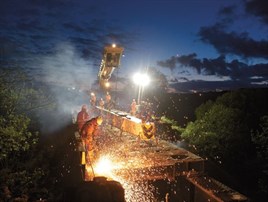 Read the peer reviews for this feature.
Read the peer reviews for this feature.
Debt lies at the heart of the Office of National Statistics’ decision to finally classify Network Rail as a government body.
The national rail infrastructure owner started Control Period 5 (CP5) last April with debt of £31.7 billion. It’s expected to finish CP5 in March 2019 with debt of £49.6bn, having ploughed the difference into the network in the form of renewals and improvements.
Although NR had borrowed from the private sector, it used a government guarantee to ensure it paid a lower interest rate. This guarantee is the Financial Indemnity Mechanism (FIM).
The original idea behind the FIM was that it provided help for NR to establish itself, and would then be phased out. Indeed, in its Final Determination for CP4 (2009-2014), the Office of Rail Regulation (ORR) specifically allowed for NR to raise unsupported debt, but the company decided not to pursue this option.
After many years of discussion, the Office of National Statistics (ONS) decided to reclassify NR following changes to European accounting rules that required it to take account of a government’s exposure to a company’s debt when deciding whether that company should be classed as a government body (see panel). In the UK, government guarantees NR’s debts in full, and this meant that NR must be classed as a government body.
£30.3bn loan programme
Although the change formally took place on September 1 2014, the greatest of the subsequent changes had already taken place. On July 4, Network Rail and the Department for Transport had signed a £30.3bn loan programme to cover NR’s financing needs through Control Period 5.
This deal covers not only what NR directly needs for its tracks and signals, but also covers any debts that need to be repaid or refinanced over the same period, and marks NR’s complete withdrawal from the private finance market for new debt. This runs counter to the view expressed by NR’s Board last February, when it argued that it should be able to retain the ability to raise at least some of its debt on its own.
The loan from government, rather than banks, means that NR will now be using some of the direct grant it receives from DfT to pay the interest it owes DfT for the loan. Ultimately, NR will repay DfT’s debt using some of the DfT grant it receives.
With existing debt continuing to be covered by the FIM and paid back when required, the July deal points towards NR’s finances being rolled into five-year agreements between it and DfT. Such deals could follow ORR’s periodic reviews that set NR’s objectives for the coming five-year Control Period.
These reviews are required to take account of funds available to the DfT and Transport Scotland, and come in the form of Statements of Funds Available (SoFA). The DfT funds England and Wales, while Transport Scotland (TS) covers NR’s network north of the border.
Annual spending settlements
Such a five-year loan settlement could alleviate fears that a return to government control marks a return to the sort of financial control that once exasperated British Rail managers. For example, as BR historian Terry Gourvish recounts in his book British Rail 1974-1997, the state railway’s investment ceiling for 1991/92 was reduced from £1,378 million (equivalent to £2,581m in 2013) to £1,070m, before being eased slightly to £1.095m until the end of 1991, when a further £55m was added.
However, there’s a sting in the tail of a Framework Agreement between NR and DfT (published by the latter on September 1), because it sets the conditions for a return to annual spending settlements. The agreement says: “The Chief Executive - as Network Rail’s Accounting Officer - has the delegated authority to spend up to the amounts allocated to Network Rail each year by the Department in a formal delegations letter.”
DfT in turn can only spend up to limits set by HM Treasury. In this way, government can throttle back on rail spending, should its finances take a turn for the worse.
The process by which DfT and Transport Scotland decide how much they want to spend, and what they want from NR as a result, is called the High Level Output Specification (HLOS). ORR checks this work, while also checking the plans NR produces in response.
This duplication makes it ripe for rationalisation. In deciding how much to spend, the DfT will take a view on how the rail network should develop, including the projects required to deliver it. ORR’s work refines this, and NR refines some more. This could be done bilaterally by DfT/TS and NR, with little or no input from ORR.
Even ORR’s role as overseer of NR’s work could be at risk in the long term. It might hold NR to account, but should the track owner’s plans go awry (for example, if electrification costs go over budget or its deadlines be missed), it will not take long for a Transport Secretary or his senior officials to call in NR’s chairman or chief executive for an explanation.
Indeed, the framework agreement makes clear that the Transport Secretary will take a close interest in NR’s activities, with the right to hold regular meetings with NR’s chairman (as well as the right to appoint that chairman).
Despite these arguments, the framework confirms ORR’s role as NR’s economic regulator. Given the traditional tension between HM Treasury and spending departments such as DfT, ORR’s work provides the Treasury with a measure of financial assurance that has a degree of independence from the department itself.
ORR retains its safety role and its place in deciding track access allocations, because access is needed by private companies as well as by those train operators running government franchises. But NR regulation is ripe to be absorbed into DfT, despite the clauses within the DfT/NR framework agreement.
Longer-term financial certainty allows better planning from NR and its private sector contractors. The latter should be better placed to appropriately train their workforces for the long term, although NR’s continued use of framework contracts comes with no guarantee that work will actually materialise. Coupled with annual spending limits, there is a real risk of spending taps being turned off at relatively short notice.
Keeping five-year control periods sits with the promises made by Secretary of State for Transport Patrick McLoughlin in a letter to NR Chairman Richard Parry-Jones last December, shortly before the ONS announced its decision.
McLoughlin wrote of the likely ONS decision: “It would not reflect any change in the underlying substance of Network Rail’s operations, nor would it affect the security of your investors or your internal decision-making on issues such as resourcing and delivery. My overall aim would be to change as little as possible about Network Rail’s structure and its interaction with central Government, while meeting the accounting and reporting standards that apply to the public sector.”
A DfT-NR Memorandum of Understanding (MoU) that followed later the same month took the same line, and proposed the framework agreement that was published on September 1.
The memorandum talked of holding NR to the targets set by ORR’s five-year review, but also of appointing a formal accounting officer to satisfy parliamentary accounting processes. The company’s accounts will be consolidated into DfT’s (and therefore government’s), to be presented to Parliament.
Value for money
The DfT’s own accounting officer will need to be satisfied that NR is accounting properly, and that its spending represents value for money. The MoU says: “In doing so, we will seek to draw as much as we can from the existing control frameworks, in particular the duties and powers of the ORR as independent regulator.”
In addition to ORR’s oversight, the National Audit Office (NAO) will take an interest in NR. It looks to find value for money in government’s actions, and its recent reports have examined train procurement, Crossrail, Thameslink and High Speed 2. It also provides an annual review of the DfT itself, and has examined how ORR regulates NR’s efficiency.
The NAO is run by the Comptroller and Auditor General, currently Sir Amyas Morse. From next April, he will be appointed as NR’s auditor, replacing the company’s private sector auditors. To this end, the DfT requires NR to supply him with whatever information he needs.
One part of NR’s structure that could see change is its membership. The company’s 41 ordinary members (and one ‘special member’ from the DfT) act as quasi-shareholders, in approving accounts and board appointments at annual general meetings. They once numbered more than 100, and were formed to provide the semblance of a public company owned by shareholders.
Although the DfT special member held the power to dismiss all the members in the event of a ‘fundamental financial failure’ of the company, the structure provided sufficient distance between the DfT and NR not to fall foul of previous European accounting rules. In this way, NR could remain classed as a private body. The DfT could also appoint a special director who would sit on the remuneration and appointments committees, but it never did so.
Network Rail members
Now that NR has been reclassified, there appears little need to keep the pretence of being a private sector company. The company’s road equivalent, the Highways Agency, does not have members - it simply has a board appointed by the Department for Transport.
If NR is to be accountable to Parliament (and the MPs sitting therein), it has no need of members. Dispensing with NR’s members almost returns to the situation of April 1 1994, when Railtrack was first established as a government-owned company, with its directors appointed by the Secretary of State. Railtrack was later floated and sold to shareholders, before its financial collapse following October 2000’s fatal accident at Hatfield.
DfT has always had the power to dismiss NR members in their entirety (and only in their entirety). While NR was in the private sector, this power was limited to the single situation of fundamental financial failure, but that constraint disappeared when NR became a public body, and was confirmed in late August when NR’s members voted to change the articles of association that govern the company.
Members will now be appointed by the special member who is the Transport Secretary (or his appointee). Before reclassification, the board appointed members. There remains no minimum or maximum number of members.
Further comparison between Network Rail and the Highways Agency shows a gulf in executive directors’ pay. NR pays its directors on the basis that it needs to compete with the private sector. HA’s directors are appointed under senior civil service pay scales, which are considerably lower, even though it also needs to compete for the best people.
Even taking into account the difference in size of the two bodies, in 2011/12 NR’s chief executive received almost four times the salary of his HA counterpart (see panel, page 48). There will also be differences in the salaries below executive director level, as NR’s board acknowledged in its April meeting.
Pay packets for directors fall under the remit of remuneration committees. For the HA, as a DfT executive agency, the committee is chaired by the DfT’s permanent secretary (its senior civil servant) together with the DfT’s directors general and a non-executive director.
Before reclassification, Network Rail’s remuneration committee consisted of three or four non-executive directors, including the company’s chairman. It could also have included Transport Secretary Patrick McLoughlin’s appointment as special director. That director would have sat on the remuneration committee with at least two other non-executives. Although the special director had just a single vote (and so could be out-voted) it’s clear that he or she would have wielded considerable influence over directors’ pay on behalf of the government.
Remuneration policy
Under reclassification, the Transport Secretary sets the pay of NR’s chairman and its non-executives, and sets the remuneration policy for the board as a whole (consulting with the Chief Secretary to the Treasury as required). Although the framework agreement holds that the policy should be drawn up by the remuneration committee and approved by members, it makes clear that the Transport Secretary must approve it before any vote by members.
Under DfT plans, members will also continue to vote at annual general meetings. In this way, they will continue to elect the company’s executive directors. The Transport Secretary does not have powers in relation to the appointment of executive directors, but he must agree the process for selecting members and the skills they should have. He also selects the panel that will select members, and has the right to approve the appointment of members. Additionally, he has the right to remove all the members - in this way, he can influence the appointment of executive directors almost to the point of directly selecting them.
For other staff, the framework says: “Network Rail’s approach to reward and remuneration should reflect both its role as operator of the nation’s rail assets and its responsibility as a steward of taxpayers’ money. It should therefore be designed to recruit, attract, develop and motivate suitably skilled staff, taking into consideration value for the taxpayer as well as commercial efficiency and market conditions.”
It calls on NR to publish details for those paid more than £142,000 per year, including “specific details of the roles of the highest earners”.
McLoughlin told Parliament on September 1 that NR was an “arm’s-length body of the DfT”, but it’s clear from the framework agreement that he has gathered the key levers of influence over NR for himself. There can be no doubt that NR is truly a nationalised company in the ways that really matter.
That opens the door to privatising Network Rail in the future.
 Peer review: Chris Bolt
Peer review: Chris Bolt
Former Rail Regulator and LU PPP Arbiter
By itself, the decision to reclassify Network Rail changes nothing. What matters is the scope it has given the Secretary of State to interfere in the running of a major company, with the risks that this will undo the progress of the last 20 years. So, how did we get here?
There are two popular arguments for greater central government control of Network Rail. Both are invalid in my view.
The first is that the scale of grants going to the company requires close Government involvement to ensure that value for money is achieved. But an independent regulator surely provides all the assurances needed about value for money? Why should civil servants in Great Minster House be more effective at this task than the regulatory experts in One Kemble Street?
The second is that the scale of its debt is so great that direct funding from the Exchequer would be cheaper even than borrowing with an indemnity. This argument is even more misconceived. What matters is not the cost of Network Rail’s borrowing, but its risk. As the National Audit Office has put it: “As a customer, the Government can sometimes benefit from the delivery of policy objectives at a price below the real cost to the business.” And that real cost has arguably gone up, because of the political risks following reclassification.
It is worth remembering that the only reason Network Rail’s debt is so high is because of the way DfT itself has played fast and loose with the biggest credit card it has at its disposal.
The original concept of a Regulatory Asset Base was that the cost of maintaining a network would be charged to revenue, averaged over the medium term, with only enhancements adding to the RAB.
But strong pressure was put on the regulator in 2003 to agree to renewals being added to the RAB, coupled with the introduction of grant paid direct to Network Rail rather than via the TOCs. Ironically, this was to satisfy various statisticians that Gordon Brown’s so-called Golden Rule was being met.
The Rail Regulator’s acquiescence to those changes has led directly to the current position whereby the independent role of the regulator is being significantly undermined.
Why does all this matter? Principally, because it moves the governance and management of Network Rail away from the well-established UK model of independent regulation of private sector network companies within a framework of government strategy, back to the inefficiency of Secretaries of State running major delivery activities. Remember the Postmaster General?!
Even the last Labour Government understood that railways operated best (very well summarised in the 2004 Rail Review) as “a public and private sector partnership… a public service, specified by Government and delivered by the private sector”.
Is there an alternative? Yes indeed, there is. It would separate the strategic responsibilities of the Secretary of State for Transport from ownership responsibilities, placing those with the Shareholder Executive (as with companies such as the Post Office and NATS). As the NAO says: “Balancing public policy and shareholder value objectives... is difficult.”
The NAO has supported the Shareholder Executive model. Why has DfT not listened? We need an answer.
 Peer review: Richard Price
Peer review: Richard Price
Chief Executive, Office of Rail Regulation
Philip Haigh’s RailReview article provides the first really forensic public analysis of Network Rail’s reclassification as a public sector body, and the potential impact on Britain’s railways. It points to the potential tensions caused by the overlapping relationship between DfT and Network Rail, and gives an insight into some of the conflicts of interest likely to arise when the spending department becomes the shareholder and encounters the temptation to micro-manage the business. It is (after all) strategist, policy maker, funder, procurer and now shareholder.
Understandably, Philip points to the overlap and potential duplication caused by the double oversight of NR by both DfT and ORR and the scope for merging the two. I’m sure he’d expect me to point out that ORR’s role in this process is set out in statute, and is rooted in enforcing NR’s delivery against the licence under which the law says it has to operate.
Putting this aside, however, the picture that Philip paints is of a world in which an economic regulator - independent of government and the industry it regulates - has an invaluable role to play in giving the public, the taxpayer and parliament assurance that the substantial sums of money invested are spent efficiently and deliver the outputs valued by passengers and freight customers.
Irrespective of reclassification, it’s also important to remember the company continues to hold a monopoly position as the owner and operator of Britain’s rail network. Both public and private monopolies can pose risks for customers, delivery and value for money.
With funders having a closer relationship with Network Rail, the role of independent regulation becomes (if anything) more important, mitigating the risk for government and rail users that detailed intervention by the sponsor department cuts across the flexibility the company needs to deliver performance targets and complex enhancement projects with the maximum possible efficiency.
Operating outside the clear and transparent structure for delivering investment, and without proper change control is a dangerous recipe for scope and cost creep on a significant scale.
The last decade has seen efficiency savings of around
£15 billion, brought about in part by independent regulation, while delivery for rail users is much stronger. Correspondingly, the challenge for Network Rail to achieve the next level of efficiency is tougher, and it would be disappointing for such a successful industry to see these advances slow, or reverse.
The continued high levels of public financial support for the railways, with billions of pounds of funding in place from taxpayers and fare payers, make it vitally important for the sector to be more transparent about service outputs, costs, and where this money actually goes. Although Philip’s article doesn’t explicitly say this, his compelling analysis makes a clear case as to why, in these new circumstances, an independent source of assurance to give this level of transparency becomes even more significant.

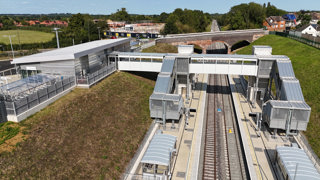
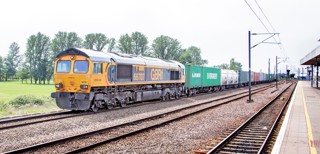

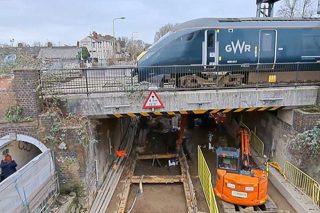
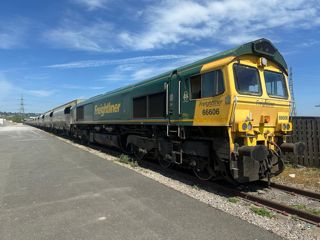












Login to comment
Comments
No comments have been made yet.